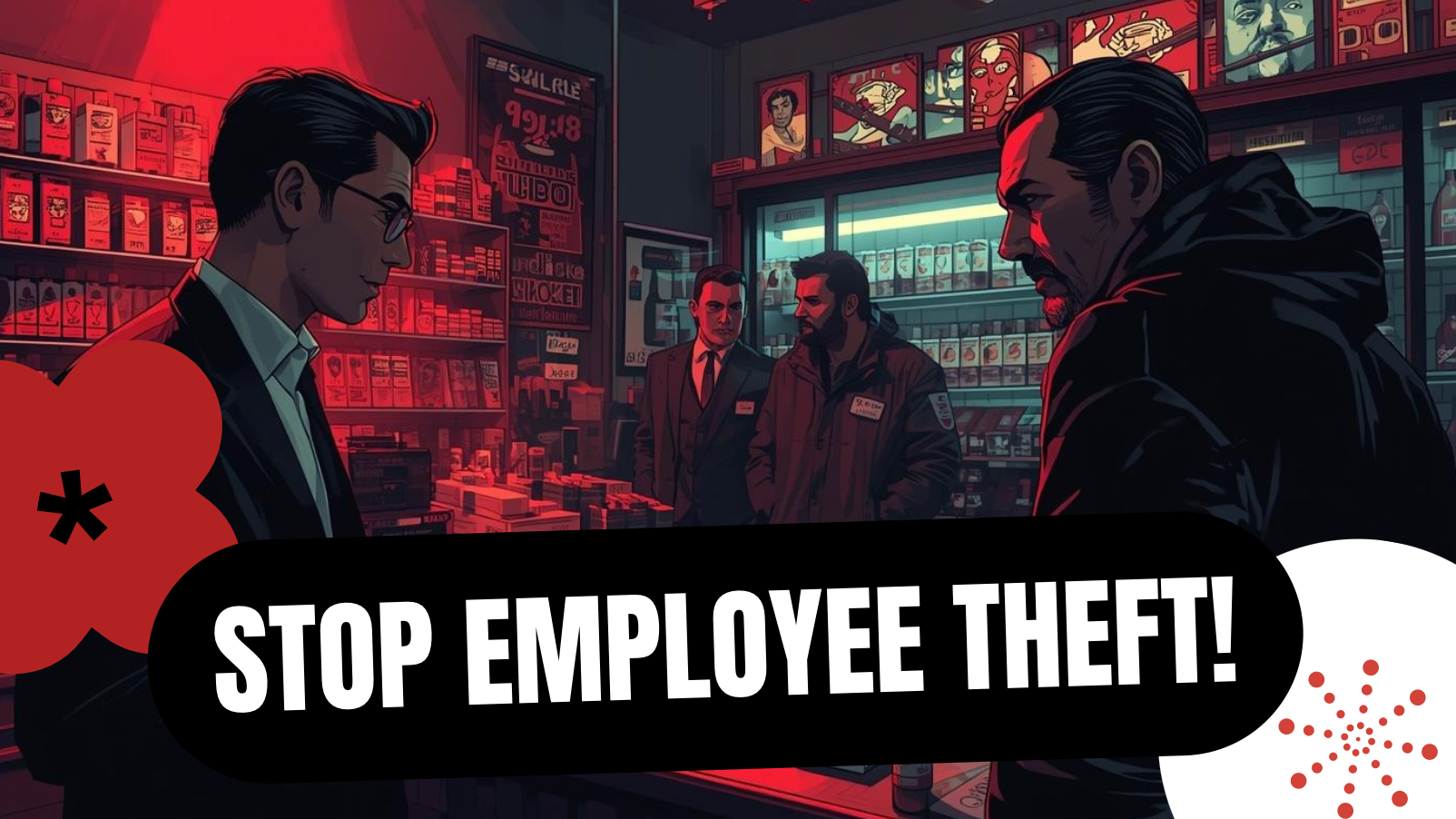Every smoke shop owner wants to believe their team is loyal. They think, “My employees would never steal from me.” That’s the kind of thinking that gets your pockets emptied and your shelves drained.
Here’s the reality: employee theft is one of the biggest killers of profit in this industry. It doesn’t matter how much you sell if half your stock is “walking out the door” for free. The sooner you face that truth, the sooner you can protect yourself.
Let’s break down exactly how to lock your shop down and stop theft before it bleeds you dry.
Step 1: Accept That It Can Happen to You
Most owners make the mistake of thinking theft is only “a problem for other shops.” Wrong.
-
Your best seller could be stealing.
-
The cashier who smiles at every customer could be stealing.
-
The “family friend” you trusted with keys could be stealing.
The minute you assume it won’t happen, you’ve already lost.
Step 2: Understand the Types of Theft
Employee theft isn’t always as obvious as someone sticking a vape in their pocket. It comes in many forms.
-
Product theft: Merchandise hidden in bags, jackets, or trash bins.
-
Cash theft: Skimming from the register, fake refunds, or under‑ringing sales.
-
Discount abuse: Unauthorized price cuts for friends or themselves.
-
Time theft: Showing up late, leaving early, or faking hours worked.
Knowing the different ways employees steal makes it easier to spot and stop it.
Step 3: Tighten Your Hiring Process
The fight against theft starts before someone even gets hired.
-
Run background checks.
-
Call past employers.
-
Ask pointed interview questions like, “What would you do if you caught a coworker stealing?”
-
Watch how they handle basic honesty tests.
A sloppy hiring process guarantees sloppy employees.
Step 4: Set the Tone From Day One
If you don’t make it clear that theft will not be tolerated, employees will test you.
-
Go over theft policies during training.
-
Explain exactly what happens if they’re caught (termination + prosecution).
-
Let them know you monitor everything—because you should.
A clear, tough stance upfront prevents a lot of problems later.
Step 5: Control Access
Not every employee needs access to everything.
-
Cash drawers: Only the person on shift should have the code or key.
-
Stockroom: Limit access to managers or trusted staff.
-
Keys/alarms: Only long‑term employees should have them.
The fewer people with access, the fewer chances for theft.
Step 6: Use Cameras the Right Way
Cameras aren’t just for catching theft—they’re for preventing it.
-
Install cameras over registers, stockrooms, and exits.
-
Make sure employees know cameras are there (deterrent).
-
Check footage regularly instead of just letting it record dust.
A camera that nobody reviews is just an expensive decoration.
Step 7: Master Inventory Control
Theft thrives when owners don’t know their numbers.
-
Run weekly mini‑counts on fast movers.
-
Do full monthly inventory audits.
-
Compare POS sales against actual stock levels.
-
Flag any consistent shortages for investigation.
If you can’t track what’s coming in and what’s going out, you’re blind to theft.
Step 8: Watch for Red Flags in Behavior
Thieves often give themselves away through habits and attitude.
-
Always volunteering to close alone.
-
Getting defensive about policies or audits.
-
Hanging around stockrooms without reason.
-
Sudden lifestyle upgrades that don’t match their paycheck.
Pay attention. People show you who they are if you’re watching closely.
Step 9: Audit Cash Like a Hawk
Cash is the easiest thing to steal—and the easiest thing to control if you’re disciplined.
-
Count tills at the start and end of every shift.
-
Require signed shift reports from each cashier.
-
Never let two employees share the same till.
-
Use POS reports to catch under‑rings and “missing” sales.
Cash theft happens because owners get lazy. Don’t be one of them.
Step 10: Fire Fast and Loud
If you catch someone stealing, don’t drag it out. Fire them immediately.
-
Terminate on the spot.
-
Document everything.
-
If it’s serious, press charges.
And here’s the key: make sure the rest of the team knows it happened. When employees see real consequences, they think twice.
Step 11: Build a Culture of Accountability
The best defense isn’t just policies—it’s a culture where employees respect the shop.
-
Reward honesty and performance.
-
Promote people who prove trustworthy.
-
Make employees feel like they’re part of something bigger than just “a job.”
A team that takes pride in their work is far less likely to steal from you.
Step 12: Inspect What You Expect
Theft happens in the dark. Your job is to shine a light everywhere.
-
Random bag checks at the end of shifts.
-
Surprise audits.
-
Walk the floor often instead of hiding in the office.
-
Review reports daily, not weekly.
When employees know you’re watching, most theft stops before it starts.
Final Word
Employee theft doesn’t just “happen.” It happens when owners get sloppy, lazy, or too trusting. This isn’t about being paranoid—it’s about being smart.
You worked too hard to build your smoke shop to let someone drain it because you weren’t paying attention. Tighten your hiring, set strict standards, and enforce accountability every single day.
Because the second you take your eyes off your business, someone else will have their hands on it.

